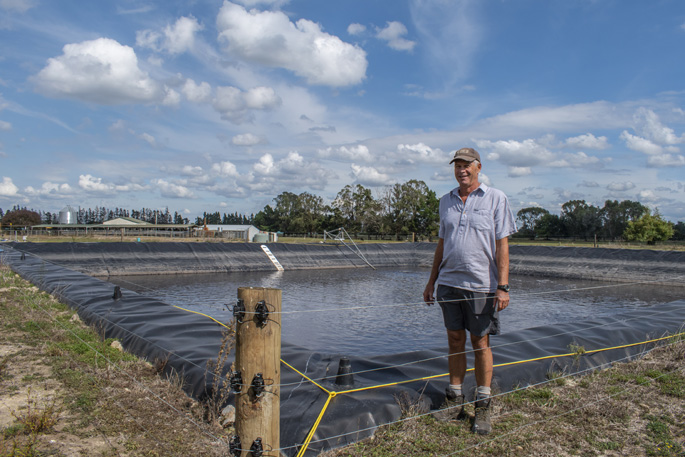Waikato dairy farmers Ian and Penny Taylor run 440 cows with spring calving on a 141ha peat block near Gordonton. The peat and peaty loam soils can be challenging, as the couple found out in the spring of 2017 when circumstances brought forward their plans to build a new effluent pond.
“It was an exceptionally wet spring and the water table was close to saturated,” says Ian.
He’s involved with the Waikato Focus on Peat Group, with Dave Holbrook from AgResearch, four other Waikato peat farmers, DairyNZ, Ballance, and is funded by a grant from the Sustainable Farming Fund.
The results from field research on their farm assisted in determining what kind of effluent management was required.
“We’d tested two different peat soils, putting effluent into lysimeters that went 700mm deep, which is a realistic level of most drainage systems, and testing the soils below,” says Ian.
The less developed peat soils bound more nitrogen, had a higher phosphorus leaching, and captured E.coli well.
The more developed peat soil leached similar nitrogen to an average mineral soil, and little phosphorus.
“However, there were issues with E.coli leaching when effluent was applied by the travelling irrigator at 15mm per run.
“In the second winter, using 10mm per run, most of it was held in the soil.”
The new pond is 2100m3, with a Viking liner, set on a clay base that goes 500mm into the ground. The rest is above ground so the water table doesn’t rise into it.
Ian decided to futureproof the pond by building it almost twice the size recommended.
A water table indicator near the shed alerts staff to the need to start pumping effluent from the old underground tank to the new pond. The pond stirrer runs nightly when the pond is high, helping with crust and smell.
Effluent gravity feeds back to the pump sump and only one pump is required.
The pond is emptied during the summer and the new Cobra travelling rain-gun applies at a rate varying between seven and 18mm depending on the requirements of the 15 effluent paddocks.
“It’s nice being able to utilise effluent effectively on freshly grazed paddocks in the summer when we are on 40-day rounds,” says Ian.
The Taylors can now rest easy knowing they are fully compliant with Waikato Regional Council effluent requirements, and have contingency for whatever their peat soils throw at them.



0 Comments
Leave a Comment